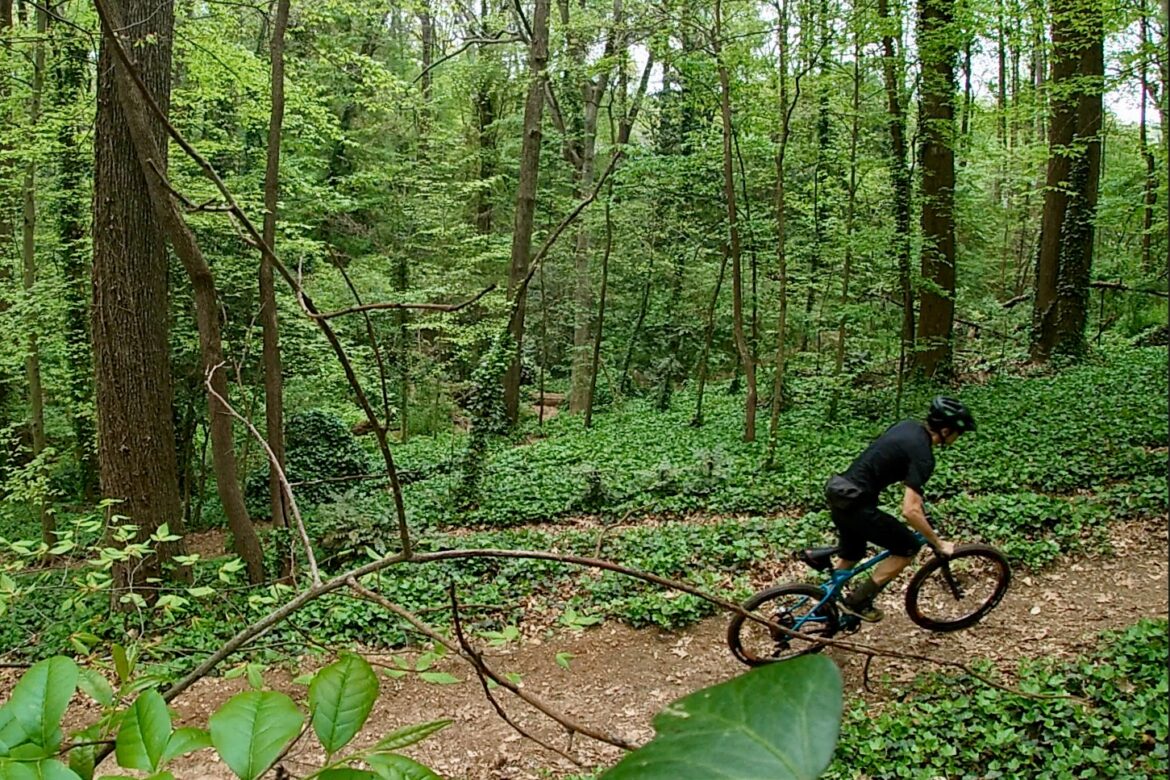
Sometimes, mountain biking alone is the only option. While rarely the safest option, there are times — like today, when all of our riding partners are potential Covid-19 carriers — when going for a solo ride is attractive.
If you find yourself going on more solo rides lately, or if you’re considering stepping out alone, here are some tips for doing so safely, or at least as safely as possible. Riding with another person is going to be safer than riding alone, but that’s not always possible or preferred.
Choose your trail wisely

When going out for a solo ride, try to choose a trail where you know others will be riding at the time you’re there. This increases the chances that someone will roll by in case you run into any trouble and need help. That’s not to say you should rely on others to have a spare tube or water for you if you run out (more on that later), but it’s the closest thing to riding with others while riding by yourself.
Mountain bikers stick together, and we’re lucky to be a part of such a great community of riders. I know I always look out for my fellow mountain bikers when I’m on the trail, and I’m confident others will do the same for me if I need help.
Likewise, exploring a new (to you) trail by yourself isn’t wise. Lewis had Clark after all, and you don’t want to find yourself lost and alone.
Be prepared
This is a given for any ride, but it’s even more important when you’re riding by yourself. Consider the amount of gear, snacks, and hydration you bring on a normal ride with friends, and bring a little extra. Remember, if you forget a pump or a tube, you won’t have that buddy with you who is always prepared.
Eight years ago I foolishly went for a solo ride on an extremely hot day, on a (new to me) trail where no one else was riding, and no one knew I was there. I got a flat, and then quickly punctured my spare. If I had an extra, extra tube or another bottle of water, I probably would have been ok getting back to my car. Instead, I had to call for rescue, and things could have ended very badly.
Take it easy

A solo ride is not the time to set a personal record on a ride, nor is it the time to attempt a feature you’ve never cleaned before. Consider planning a shorter ride than usual to make sure you have the fitness to make it home safely.
Getting back to trail choice, if you have a choice between more technical, advanced trails or smoother, easier trails, go for the latter. Rad trails will always be there for another day.
Tell someone where you are going…
… and when you’ll be back. In the olden days this meant writing a note with pen and paper, but today we can use tech to make this even easier and safer.
If you have a smartphone, bring it (and try to ride somewhere you’ll have service for the entire ride). iPhones have a free app called “Find My” that lets you share your current location with trusted friends or family members for a set period of time (or all the time if you really trust the other person). Google Maps has a similar feature, which I’ve found useful for group rides when folks are trying to meet up and stay connected during a ride.
Garmin GPS devices, linked to a cell phone, can also share your location with selected contacts, as can a Spot tracker or the Strava app. There are even helmets with built-in sensors that send a text to someone when you’ve had a crash.
The point is, there are many good options for effortlessly letting another human being know where you are during the ride in case something happens.
Ask yourself: Is it worth riding alone?
I recently needed to test a bike that was in for review, and my local trails just wouldn’t cut it. But driving two hours north of the city by myself, to ride hard up (and down) a mountain in the woods alone, didn’t seem safe either. Keeping in mind the need to social distance, I asked to meet a friend so we could ride together. While large group rides, and carpooling are out for now (for me, anyway) riding with a friend feels like the safest option when I want to go for a long, rowdy, difficult ride.
Many of us rely on mountain biking for physical fitness — and for mental health too. But it’s worth asking if a solo ride is truly necessary, and if so, is it worth the risk. Keeping in mind the tips above, the answer for many of us can be a yes, as long as we plan ahead.





















14 Comments
Jul 16, 2020
Jul 18, 2020
Jul 16, 2020
In my experience group rides work best when everyone is at a similar fitness/ability level, regardless of age.
Jul 17, 2020
Jul 20, 2020
Jul 14, 2020
Jul 14, 2020
Jul 16, 2020
Jul 16, 2020
Jul 19, 2020
Jul 14, 2020
Yes, notified someone of your route and ride a little conservatively when alone.
Jul 30, 2020
Jul 16, 2020
Jul 16, 2020
Tubeless is a huge convenience and I consider it mandatory for back-country riding, as your incident suggests.